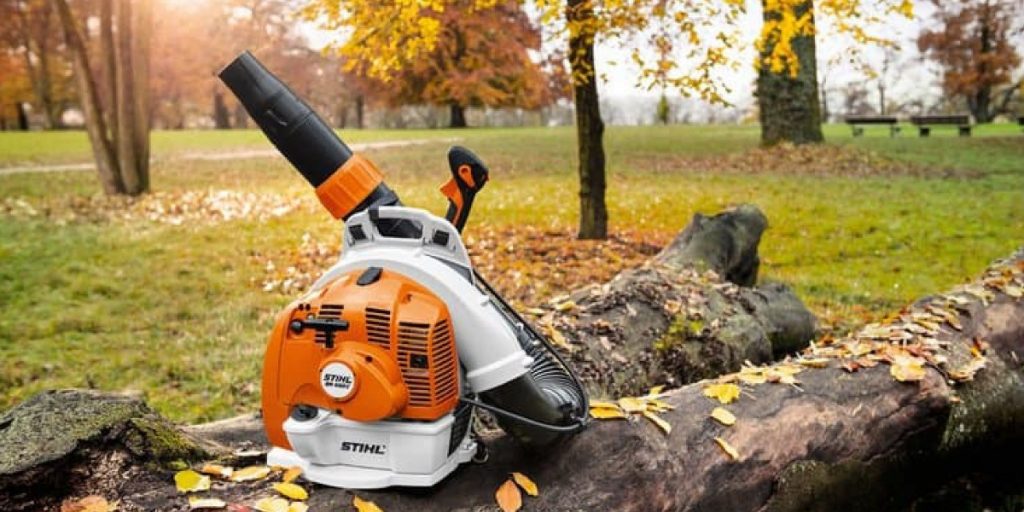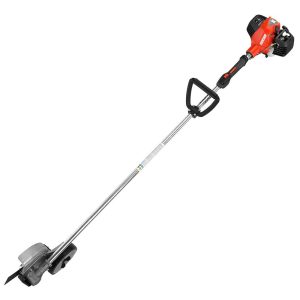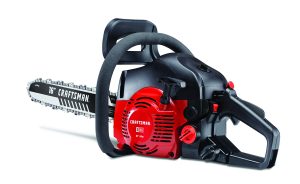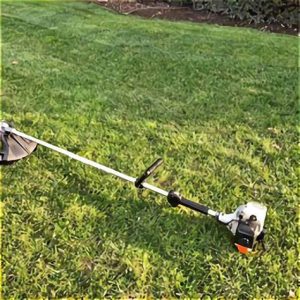Top 8 Issues With Your STIHL Leaf Blower’s Rough Running
If your leaf blower’s engine is sputtering and not pulling its weight, it may be because not enough air, fuel, or spark is reaching the combustion chambers.
When the carburetor is blocked, the fuel filter is clogged, the fuel tank vent is clogged, the air filter is clogged, the spark plug is clogged, the gasoline is old, or the spark arrestor is clogged, a STIHL leaf blower will run poorly.
Always turn off the fan, take off the spark plug boot, and ensure nothing is moving. Use caution when working near the hot engine and muffler. Avoid harm by letting them cool down first.
Table of Contents
8 Causes for Your STIHL Leaf Blower’s Poor Performance
Using Stale or Low-Quality Gas in a STIHL Leaf Blower
Unfortunately, gas has a shelf life. In fact, after only a month of use, it already begins to deteriorate.
The cause of your leaf blower’s inability to start, its sluggish performance, or its complete shutdown could be old gas.
That’s because biofuels like corn-based ethanol are now commonplace in gasoline. Because of its composition, this fuel will inevitably cause the fuel system to become clogged with condensation.
A car’s fuel system and engine are particularly vulnerable to the corrosive effects of ethanol and water. Components will be damaged, and varnish and sticky deposits will impede gasoline.
In order to avoid the problems associated with using ethanol and stale gasoline in your Stihl leaf blower, consider the following advice.
- Gasoline should be purchased regularly and used within 30 days.
- Before putting it to the gas tank, blend gasoline and 2-cycle engine oil at a 50:1 ratio.
- The minimum octane rating for gas is 89, while the highest percentage of ethanol allowed is 10%.
- 2-cycle engine oil, such as STIHL’s High Performance or HP Ultra oils
- Keep the gas in an airtight container out of the reach of moisture.
- Add a fuel stabilizer to gas to help it last slightly longer.
Two-stroke STIHL leaf blowers call for a 50:1 gas-to-oil ratio. The ratio of gas to oil is 50:1. To ensure proper fuel mixture for your STIHL leaf blower, please refer to this fuel handbook for measurements.
STIHL’s 4-MIX line of leaf blowers combines the power of a 4-cycle motor with the compact design of a 2-stroke one.
Similarly to STIHL’s 2-cycle leaf blowers, the 4-MIX engines require a fuel mixture of 50:1.
Unclean STIHL Leaf Blower Spark Plug
For combustion to take place, the mixture of fuel and air must first be ignited by a spark. If the spark plug is unclean or damaged, it may only fire sometimes, causing the blower to operate erratically and slowly.
There are a number of factors that might contribute to a poorly performing engine, including a filthy spark plug, an incorrect electrode gap, and a loose spark plug wire.
Use a spark plug wrench to take out the spark plug. Assure yourself of its state. If the spark plug’s tip is very dark, the porcelain is fractured, or the electrode is burned, you should replace it.
You can use a wire brush to clean a spark plug or just get a new one if you discover that it’s plain dirty.
A fresh spark plug is one of the most important parts of a well-running leaf blower, and I always use new ones. The spark plug gap must be adjusted appropriately. A feeler gauge will do the trick for making sure.
Make sure the spark plug wire is attached firmly and either replace or clean the spark plug.
STIHL Leaf Blower with Clogged Fuel Filter
Before it enters the fuel system, fuel is filtered through the fuel filter. Having a clean engine is important, so do this.
The fuel filter is located inside the tank, connected to the fuel line. Lack of regular filter replacement might restrict fuel flow to the carburetor.
Changing the STIHL fuel filter is necessary if it becomes clogged.
- Put down the leaf blower in a level spot.
- Clean the area around the gasoline tank’s cap with a damp rag. Just take off the top.
- If you need to replace the fuel filter, make sure you know where it should go in relation to the tank.
- Take the gasoline line and the filter out of the tank.
- Install the new filter without any slop.
- Return the fuel filter to its original location inside the tank.
- Change the gas cap.
A STIHL Leaf Blower with a Blocked Fuel Line
When the fuel line of a leaf blower becomes clogged with old fuel, the machine becomes less efficient. Investigate any possible pinched or kinked lines or ones that are plugged. If your fuel line is clogged or broken, you should get a new one.
STIHL Leaf Blower with Leaking Fuel Tank Vent
If the gasoline tank vent gets blocked or broken, no fresh air can enter to keep the pressure in the tank constant. There will be a vacuum in the gas tank if the vent is blocked. As a result, fuel can’t leak out of the tank.
You may check this by releasing air from the blower’s fuel cap. Turn on the fan and leave it running.
In order to avoid leaking gas from the tank, be mindful and keep the leaf blower on a flat surface. To establish the gasoline tank vent is faulty, tighten the fuel cap and operate the blower again to check if the problem persists.
If your blower still operates roughly after you’ve replaced the fuel cap, the problem is likely the fuel tank vent.
STIHL Leaf Blower with Clogged Air Filter
It is impossible to run the engine without air. The leaf blower’s performance will suffer without sufficient airflow.
A clogged air filter is a potential source of airflow restriction. If the air filter is not periodically cleaned and replaced, it can become clogged with dirt and debris.
If you discover that your air filter is clogged, you should get a new one. The little little air filter is often overlooked. In terms of keeping the motor safe, it is a crucial part.
For information on how to clean the specific type of air filter used in your STIHL leaf blower, please consult the handbook that came with your unit.
Instructions for maintaining a few popular models of STIHL air filters are provided below.
Cleaning the air filter in a STIHL blower:
- In order to prevent dirt from entering the carburetor, turn the choke to the on position.
- Take the air filter out of its housing.
- Clean the air filter housing and cover with a damp cloth to remove any leftover dust or debris.
- To remove dirt from the filter, tap it against a hard surface or your hand.
- Put in the new, pristine filter. (Insert a replacement air filter if the old one is too dusty or damaged.)
- Replace the air filter cover.
A STIHL Leaf Blower with a Filthy Carburetor
A properly adjusted carburetor ensures that your leaf blower gets the optimal fuel-to-air ratio for optimal performance. When the channels are obstructed, the fine parts stop working as they should.
A rough-running leaf blower could be the result of too little gasoline being combined with the air.
If your carburetor is clogged, you can try cleaning it to see if it helps. If cleaning the carburetor doesn’t solve the problem, you’ll either need to rebuild it (if rebuild kits are available for your model) or get a new one.
A STIHL Leaf Blower With a Clogged Spark Arrestor
In order to prevent burns or fires from the leaf blower’s hot exhaust, it is equipped with a small metal screen. An arrestor for sparks, this screen is here.
If it isn’t cleaned regularly, carbon accumulation will cause it to become clogged.
Pull the wire out of the spark plug. Take off the exhaust cap for the vehicle. You need to take off the spark arrestor screen very carefully. Use a metal brush to remove any debris from the screen, then replace it. The engine exhaust cover must be reattached. Get the wire back on the spark plug.
If the screen is too dirty to clean properly or if it is torn or has a hole in it, you should get a new spark arrestor screen.








